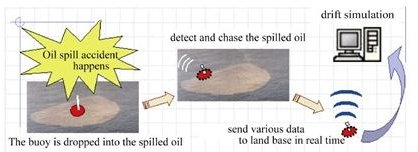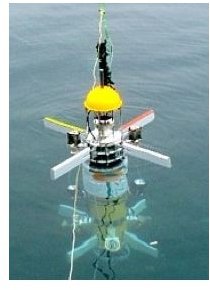Ocean oil spills - What is SOTAB?
The incidences of ocean oil spills have increased drastically in the recent years, leading to any equivalent rise in the adverse effects on Marine life. Spilled oil tracking autonomous buoy or sotab, is an oil spill tracking device that is used to monitor the direction of proliferation of the spilled oil incase of an oil spill
A minor oil spill can take a form of a major one in case of heavy winds and rough weather. It is imperative to resist the movement of oil in such conditions. Often it is observed that in bad weather conditions, pollution prevention or oil recovery help takes a longer time to reach the accident place. Most of the times the damage is already been done till the time the necessary steps are taken.
Satellite images or aerial surveys using aircrafts are common practices to track the oil spill movement. But these methods become unreliable in case of rough weather and heavy winds. For this reason, Spilled oil tracking autonomous buoy are deployed to this accident prone regions not only to monitor the oil movement but also to send real time data containing details back to the shore.
Construction
Sotabs or spilled oil tracking autonomous buoy are Global Positioning System (GPS) enabled robotic buoys. The buoy weighs approximately 110 kg and has a height of 3 meters and a diameter of 27 centimeters. Most of the body part remains submerged in the water. Sensors are mounted on the submerged part of the buoy, which detects floating globs and density of oil. In case the layer of oil is thick, it automatically changes its buoyancy and dives further into the water to measure the exact quantity of oil. The sensors also detect depth, water temperature, direction and speed of the wind. The design and construction of the body is made robust so as to withstand adverse weather conditions.
Working
In accidents involving oil spills, sotabs are dropped in the accident prone area after turning them on. They float in water just like the conventional bouys. The sensors collect the details and the GPS system with an antenna attached at the top of the buoy sends the real time data to the shore.
Incase of a heavy oil spill, Sotab takes sample of water for quality assessment. The GPS system also sends real time data regarding geographical position and oceanographic data to the monitoring system on shore. Sotabs can operate for around 3-4 weeks without battery replacement.
Sotabs are provided to all the oil and chemical tankers. In case of an oil spill, the tankers drop the sotabs in the accident prone areas. With the help of the four fins, Sotab steers itself through the oil, monitoring and procuring details and sending it to the shore. Sotab can also be dropped from the air in the accident prone region.

References
Response to Marine Oil Spills by International Tanker Owners Federation
Oil Spills and the Marine Environment by Donald F. Boesch
Images
Response to Marine Oil Pollution - Review and Assessment (Environmental Pollution) - by Douglas Cormack
ubergizmo.com
